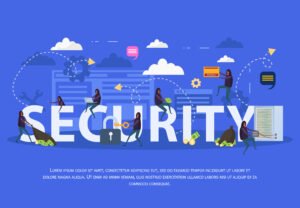Understanding CVSS : A Complete Guide to Vulnerability Scoring
What Is CVSS?
CVSS stands for Common Vulnerability Scoring System. It is a framework used to rate the severity of software vulnerabilities. CVSS assigns a numeric score to vulnerabilities, which helps organizations prioritize remediation.
The scores range from 0.0 to 10.0. Higher scores indicate more critical security flaws. CVSS is maintained by FIRST.org and is widely used by security professionals.
Why It Is Important

Cybersecurity teams often receive large volumes of vulnerability data. Without a standard scoring system, it’s hard to know where to begin.
Here’s why CVSS matters:
-
It standardizes vulnerability severity.
-
It helps in prioritizing security fixes.
-
It supports risk management decisions.
Therefore, using CVSS makes patch management more efficient.
How It Works
CVSS scores are calculated using three metric groups:
1. Base Metrics
These define the inherent characteristics of a vulnerability. They don’t change over time or across environments. Key factors include:
-
Attack Vector (AV)
-
Attack Complexity (AC)
-
Privileges Required (PR)
-
User Interaction (UI)
-
Confidentiality (C), Integrity (I), and Availability (A)
2. Temporal Metrics
These account for factors that change over time, such as:
-
Exploit Code Maturity
-
Remediation Level
-
Report Confidence
3. Environmental Metrics
These metrics are customized for a specific organization’s environment. They consider asset importance and potential impact.
CVSS Score Ranges and Severity Levels
Scores are grouped into the following severity levels:
Organizations can use these levels to triage vulnerabilities effectively.
Key Benefits

There are several benefits:
-
Easy integration with vulnerability scanners
-
Standardized severity scores across tools
-
Enables risk-based vulnerability management
Moreover, it helps non-technical stakeholders understand the impact of vulnerabilities.
Limitations
Despite its usefulness, CVSS has some limitations:
-
It doesn’t consider exploitability in real-time.
-
The environmental score may be subjective.
-
It may not reflect business risk accurately.
As a result, it should be used along with other risk assessment tools.
Final Thoughts
To sum up, it is an essential tool for any cybersecurity program. It helps teams prioritize vulnerabilities based on a consistent scoring model.
However, organizations should not rely on it alone. Combining it with threat intelligence and business context offers better results.